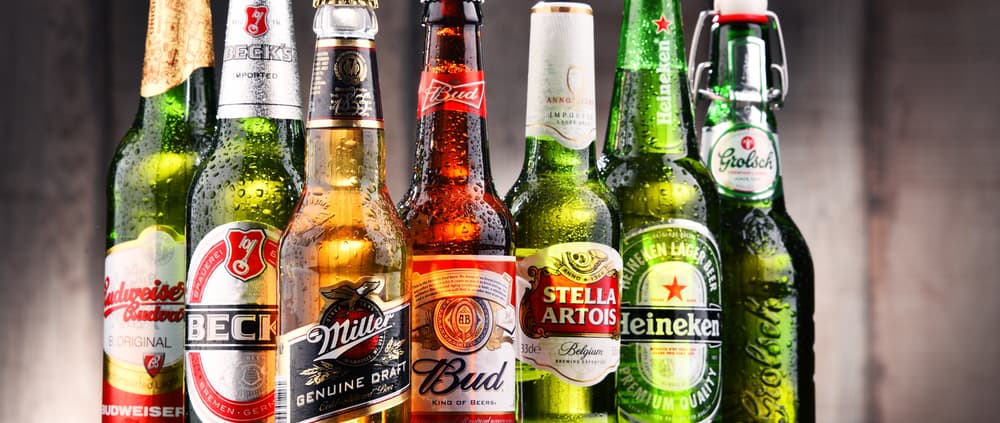The Most Popular Beers Around the World & Why These Countries Love Them!
The Most Popular Beer Types Around the World
Understanding beer types is essential to appreciating their popularity. Below is an in-depth explanation of the most common beer types:
1. Lagers
Lagers are light, crisp, and perfect for warm-weather drinking. This beer type is fermented at cold temperatures, giving it a clean, smooth taste. Think of beers like Budweiser or Heineken—they’re approachable, consistent, and universally loved.
- Flavor Notes: Mild bitterness, light maltiness.
- Best Paired With: Barbecues, burgers, and game nights.
2. Ales
Ales are brewed at warmer temperatures, creating a more complex and fruity flavor. Popular ale subtypes include Pale Ale, IPA (India Pale Ale), and Brown Ale. For instance, Sierra Nevada Pale Ale is a crowd favorite for its balanced hop and malt character.
- Flavor Notes: Hoppy, fruity, or nutty.
- Best Paired With: Roasted meats, spicy foods, and cheese.
3. Stouts and Porters
For those who love rich, creamy, and darker beers, stouts and porters are ideal. Brands like Guinness are iconic, offering deep flavors of coffee, chocolate, and caramel.
- Flavor Notes: Roasted, creamy, and slightly sweet.
- Best Paired With: Oysters, chocolate desserts, and hearty stews.
4. Pilsners
Pilsners, a type of lager, are loved for their refreshing bitterness. Originating from the Czech Republic, beers like Pilsner Urquell set the gold standard.
- Flavor Notes: Crisp, bitter, and floral.
- Best Paired With: Light salads, fried foods, and seafood.
5. Wheat Beers
These beers, often hazy and smooth, are brewed with a higher proportion of wheat. Blue Moon and Weihenstephaner are global wheat beer favorites, known for their citrusy and refreshing profiles.
- Flavor Notes: Light, smooth, and slightly fruity.
- Best Paired With: Salads, seafood, and fruit-based desserts.
What makes a country prefer one beer over another? Is it good branding, mass marketing, and consumers choosing the most easily available option? Or is it something more deeply ingrained into the subconscious of a nation of people?
YoLong celebrate everything about beer and its production. We do this by creating the best equipment to do the perfect job of duplicating a popular beer recipe every time. It is, after all, a beer’s consistency and excellence that raises it to the top of the most beloved beers in a country.
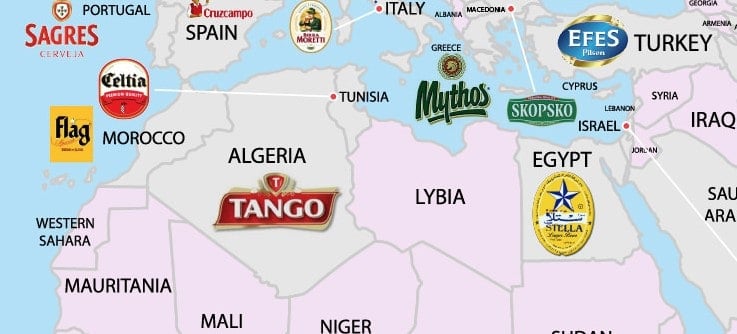
Northern Africa
Algeria – Tango (Heineken)
Heineken acquired Algeria’s best-selling beer, S.A.R.L. Tango, in 2008. It comes in two varieties: Tango Biére blonde and Tango Sans Alcool (alcohol-free). Tango is a pale lager -North American/Light Beer. This describes a beer that is a cross between a Pilsner and a Pale Lager. A pale lager/North Am. light will typically have softer carbonation than the classic Pilsner popular in Europe.
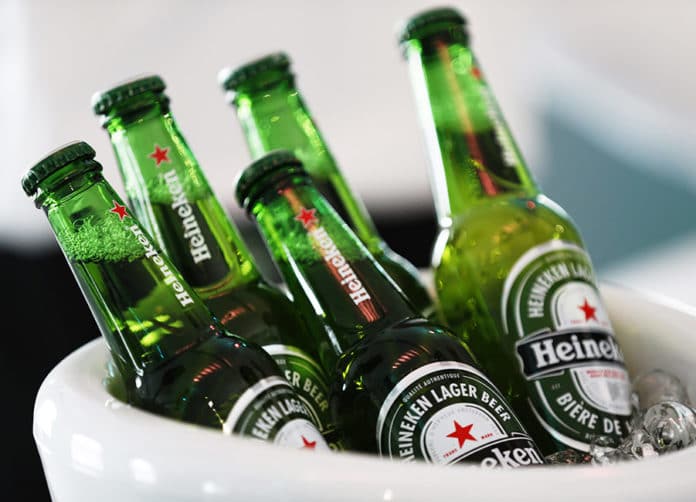
Tango is characterized by its light to medium body, average carbonation, and 4.8% ABV. Described as golden in colour, with aromas of malt and straw, after expert pouring, Tango will have a thin, white head. Drinkers have pronounced the taste as: grain; sweet; malt; papery; thin.
Why is Tango the Most Popular Beer in Algeria?
Although Europeans might find the thin, light flavour of Tango unappetizing on a snowy day, Algerians love the sweet, refreshing golden beer with a thin, white head and restrained carbonation. It is perfect for the Mediterranean climate of North Algeria and the extreme temperatures experienced in the Tell region.
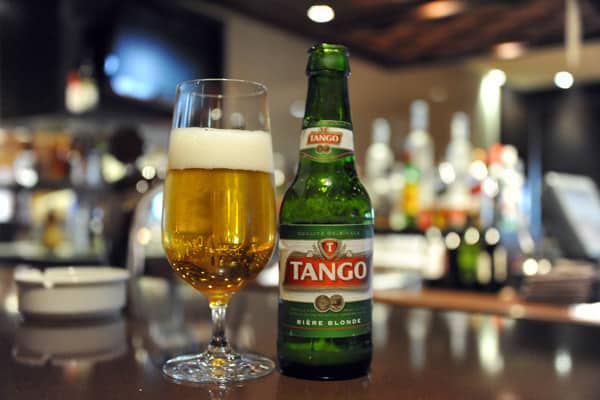
How Would a Commercial Beer Brewer Control the Carbonation Process?
Tango’s signature flat, thin, white head is probably created with a post-filter (to remove the yeast) carbonation process. Every beer needs to keep CO2 gas inside the liquid, and this requires the pressure from a sealed bottle lid or cap. When the cap is removed or the tab is pulled off the can, the pressure is released and the bubbles begin to rise.
Most natural carbonation escapes during the fermentation of the wort. Natural carbonation occurs in the commercial brewery vessels or it can happen in the bottle when the beer is given time to ferment. Unfiltered beer has the active yeast hanging in a suspension in the liquid. When sugar is added to the beer upon bottling, the sugar and yeast will release the CO2, which is then absorbed by the beer.
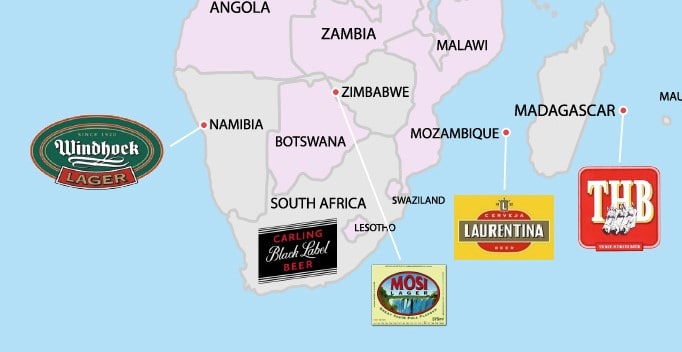
Equipment Guide for Beer Brewing
Brewing beer, whether at home or commercially, requires specialized equipment. Here’s a breakdown of essential brewing systems:
| Equipment | Purpose | Common Features |
|---|---|---|
| Mash Tun | Converts starch to sugars | Insulated vessel, temperature control. |
| Fermentation Tank | Ferments wort into beer | Stainless steel, airtight, various sizes. |
| Kettles | Boils wort | Large capacity, heating system. |
| Filtration Systems | Removes unwanted particles | Carbon filters, automated options. |
| Bottling and Canning Lines | Packages the final product | High-speed filling, sealing systems. |
The choice of equipment depends on factors like brewing scale (home vs. commercial), desired beer quality, and budget.
Popular Beer Brands and Their Global Appeal
Now that we’ve covered beer types, let’s dive into some of the most recognized beer brands worldwide. These beers have stood the test of time due to their taste, reputation, and accessibility.
| Beer Brand | Type | Country of Origin | Unique Selling Point |
|---|---|---|---|
| Budweiser | Lager | USA | “The King of Beers” with a smooth, crisp taste. |
| Heineken | Lager | Netherlands | Balanced flavor with global recognition. |
| Guinness | Stout | Ireland | Iconic creamy stout with roasted notes. |
| Corona Extra | Lager | Mexico | Light, refreshing beer best served with lime. |
| Stella Artois | Pilsner | Belgium | Heritage-rich beer with a crisp, floral profile. |
| Sierra Nevada Pale Ale | Pale Ale | USA | Pioneering pale ale with bold hops. |
Each of these beers has carved out a special place in beer culture, from the beaches of Mexico with Corona to the cozy pubs of Ireland with Guinness.
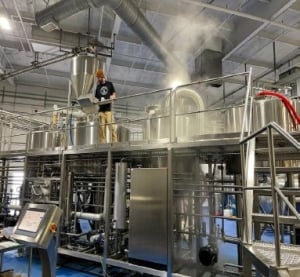
brewing system
Equipment Guide for Beer Brewing
Brewing beer, whether at home or commercially, requires specialized equipment. Here’s a breakdown of essential brewing systems:
| Equipment | Purpose | Common Features |
|---|---|---|
| Mash Tun | Converts starch to sugars | Insulated vessel, temperature control. |
| Fermentation Tank | Ferments wort into beer | Stainless steel, airtight, various sizes. |
| Kettles | Boils wort | Large capacity, heating system. |
| Filtration Systems | Removes unwanted particles | Carbon filters, automated options. |
| Bottling and Canning Lines | Packages the final product | High-speed filling, sealing systems. |
The choice of equipment depends on factors like brewing scale (home vs. commercial), desired beer quality, and budget.
Southern Africa
South Africa – Carling Black Label Beer (SAB)
As South African Breweries – SAB – proudly announces on their site, they have been producing Carling Black Label for over 40 years. CBL has won many awards all over the world and when it appears in beer tasting expos, it receives a warm reception from those who sample it. It is also known as Zamalek, and the history of how Carling Black Label came to be called that is an interesting one.
How Carling Black Label Came to Be Called Zamalek
Egypt has a football (soccer) club called Zamalek. They visited South Africa in 1993 to play in the African Cup Championship. They played against the legendary South African soccer team called Kaiser Chiefs. The Egyptian Zamalek team beat Kaiser Chiefs in a slamming 1 – 2 victory, and knocked the South African team right out of the championship. This complete knockout and defeat is used to describe the effect drinking a Carling Black Label can have on someone.
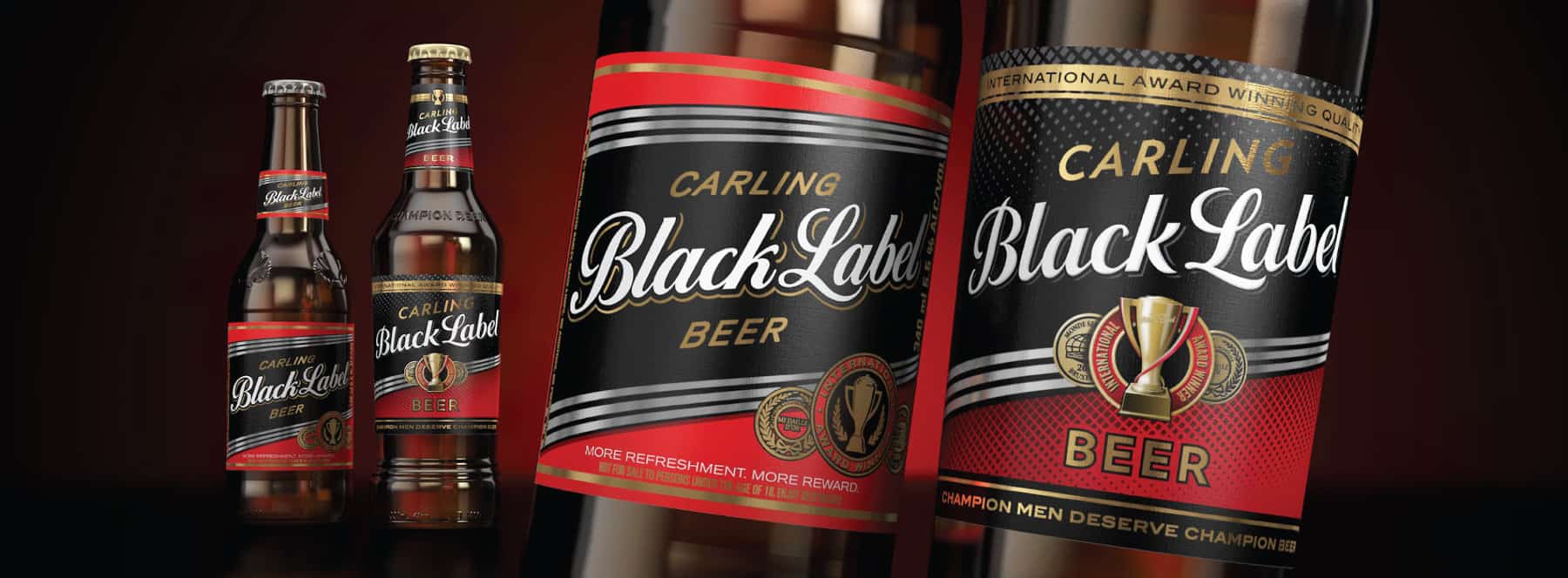
The reason for this is, while most beers sold in South Africa have less than 5% ABV, Carling Black Label packs a powerful 5.5% alcohol content punch. This is more than enough increase in ABV to take the average beer drinker out of the competition!
The Taste of Carling Black Label/Zamalek
Carling Black Label is characterized by its full-bodied, smooth, rewarding flavour. It has been described by visitors from other countries as having a distinctive, fruity aroma and low bitterness levels. It is a thin, light beer with a soft, delicate fizz created from the carbonation process. When poured by an expert, a Black Label beer should have a lightly foamy and translucent head of white bubbles, and a sweet, fruity taste with overtones of citrus.
This seems to be the ideal balance of refreshing lightness and drinkability needed from a beer in such a hot climate. CBL has become one of SABs most successful commercially produced beers.
How Do Breweries Stop Beers from Being Too Bitter?
There is a difference between the tang produced by a hoppy beer and the sharp, bitter overtones created by excess tannins. Tannins occur in malted grains as a form of polyphenol (a micronutrient that activates the bitterness receptors in the taste buds). During the mashing process, when the sweet, malted grain is combined with temperature-controlled water, the heated water activates the malt enzymes. This activation triggers the grain’s starch to begin converting into sugar.
Mashing is done in a large container called a mash tun. The mash tun retains the heat while the grain starch is activated for the optimum amount of time. The next process is called the lautering; this is done in the lauter tun. The spent grain and husks are separated from the sweet wort in a lauter tun.
It is during the brewing process in the mash tun and lauter tun where the tannins, extracted from the husks, can be driven higher. This is caused by several factors.
Excessive tannin will be extracted from beer if the pH balance has been allowed to go too high (6.0 and above). This can happen because grains are steeped in an extracted brew that contains too much water, or when the all-grain brew wort is lautering. The grain-to-water ratio has to be calculated exactly, in order to avoid excess tannins from being extracted.
If a brew is all-grain, the tannins are best extracted close to the end of the sparge and lautering process. It’s at this juncture when the pH can rise above 6.0. To counteract the pH rising, keep an eye on the pH of the mash. Maintain it at around 5.2 to 5.6 pH during the mashing, lautering, and brewing.
If this sounds very complicated, it’s because breweries are run by some of the most qualified and excellent brew masters in the world. They have in-depth knowledge on how to craft beer using science and instinct.
Commercial breweries, and a high percentage of craft breweries as well, rely on fully automatic brewery equipment. This is to ensure the beer recipe is created and produced according to the strict guidelines laid down by the brew master.
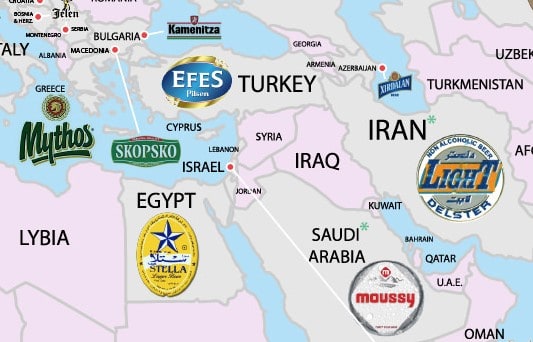
Asia & Europe
Turkey – Efes (Anadolu Group)
The country of Turkey occupies a unique geographical position. It lies between Asia and Europe, the eastern Mediterranean and the Middle East, and represents a blend of both cultures.
Turkey is an incredibly popular holiday destination (sixth most popular holiday destination in the world) for people all over the world, but especially from the Asian and European continents. They flock there for the clement weather, delicious cuisine, and friendly people. Turkey is the cradle of civilization and the centre of where beer culture originates.
Turkey’s most identifiable and world-renowned beer is Efes Pilsen. The manufacturers of this famous beer are world leaders in setting trends and the first to reach ground-breaking goals.
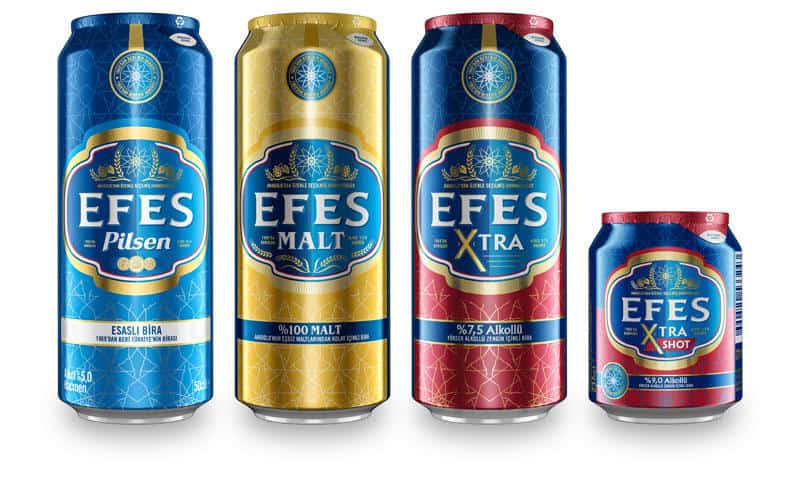
Interesting Facts About Anadolu Efes Pilsen Beer
Every visitor to Turkey knows how to pronounce “Efes” – it is Eff (how the letter “F” is pronounced) and Ess (how the letter “S” is pronounced) – so say Eff-Ess when you want to order one. But this is not the only interesting fact to know about Anadolu Efes Pilsen.
The name Efes was chosen by the beer’s national consumers. A competition was held and the inspiration for the winning name came from the ancient historical city of Ephesus, near the Ege Biracılık ve Malt Sanayii A.Ş. brewery in İzmir. Efes Pilsen won a gold medal in Paris at the Sélection Mondial in 1973, and has been winning international beer awards steadily ever since then.
Anadolu Efes Pilsen Taste and Flavour Profile
Efes is a European Pale Lager. It has an ABV of 5% and is produced all year round to satisfy its ever-increasing fan base. When the beer is expertly poured (an aggressive centre pour with abrupt taper off), it appears clean and clear in the glass with a thin, white head after settling. The colour is yellow with slight effervescence and a small amount of lacing occurring during drinking.
The aroma upon first inhalation is redolent of rich corn with a touch of sugar, and a welcome hint of lightly floral hops.
The taste and flavour of Efes has been described as slightly citrus, corn cake, polenta, and cream crackers. For the beer drinker who is expecting a fine Pilsener, and the identifying Pilsener qualities of crisp, clear appearance and taste, Efes does not disappoint.
It’s for these reasons – the consistent taste and aroma profile, light to moderate herby, floral, and earthy character, and light to medium body and carbonation – that you will find its green glass bottle and dark, royal blue label on tables all over the world as Efes sales continue to dominant Europe and Asia.
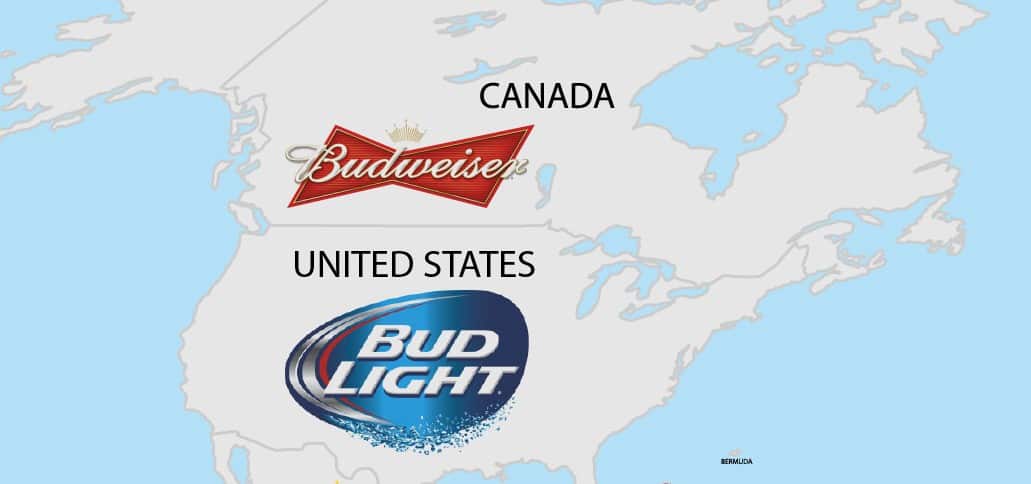
North America
The United States of America – Bud Light (Anheuser-Busch)
Light or “Lite” beers are slowly taking over in countries that tick these boxes:
- People want cheap beer
- Consumers are moving to beers with lower alcohol content
- The market is saturated with advertising that influences the target demographic to choose lite beer
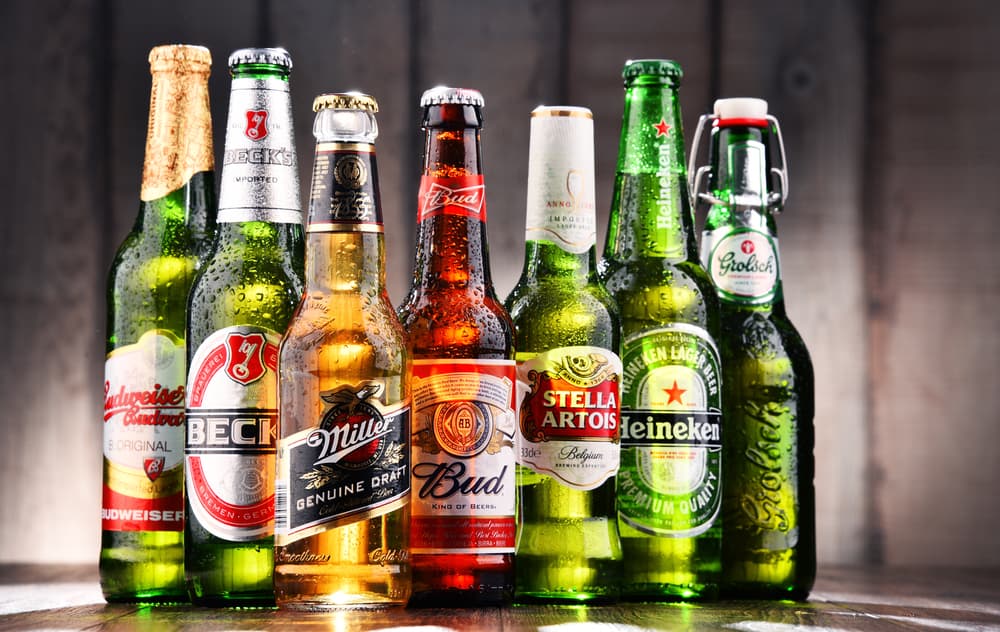
How Did Bud Light Become the Best Selling Beer in the United States?
Between the two largest beer companies in the U.S., (Anheuser Busch and Miller Coors) they control 71% of the beer market in that country. The truth is, if an alcohol and beverage distributor wants to stock a range of beer brands, they have to give the prominent shelf and fridge positions to these two top selling beer suppliers, or they will lose their price profit margin.
So, when a customer is rushing into the store to buy a quick six pack, the first thing they will see is a display with either an Anheuser Busch or a Miller Coors product stacked on it, and the prices will be the cheapest in the store. It’s no wonder that only 11 brewers in total account for 90% of all beer sold in the United States. Even become brands in the world.
The shopping patterns of beer buyers show that when consumers have to cater for a large crowd of drinkers, such as a party or barbecue, they pick lite beer over tasty craft beer every time. It saves them money, and provides their guests with a budget-friendly, light, refreshing brew that is not going to hit them over the head with the alcohol content. It’s for these reasons that Bud Light/Lite is the most popular beer brand in the States.
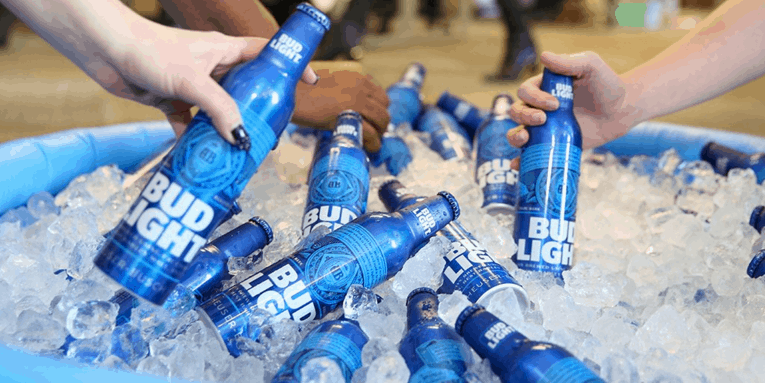
Key Facts About Bud Light
As are most of the favourite beers in hotter climates, Bud Light is an American Light Lager. It has an ABV of 4.2% and is brewed using a combination of rice and barley malts, and a blend of premium hops of different varieties. Some of the hops are grown in America and a percentage is imported from overseas.
This is because there has been a massive strain on American hop suppliers since the emergence of multiple craft breweries across the county. Part of the appeal of a craft beer is that it is brewed according to the traditions of yesteryear, and this means as few imported natural ingredients as possible.
The countrywide hop shortage is leading to the expansion and construction of craft breweries to slow down or stall completely. This is a sad consequence to the popularity of locality crafted beer. Hopefully, the issue will be resolved with more hop crops being grown or imported.
There are many commercial and craft brewery equipment fabricators who are able to supply the natural raw ingredients needed to make beer. Manufacturing outstanding brewery equipment is not the only talent many companies have. Being able to introduce high quality beer ingredient suppliers to breweries is a necessary subdivision of the beer making process.
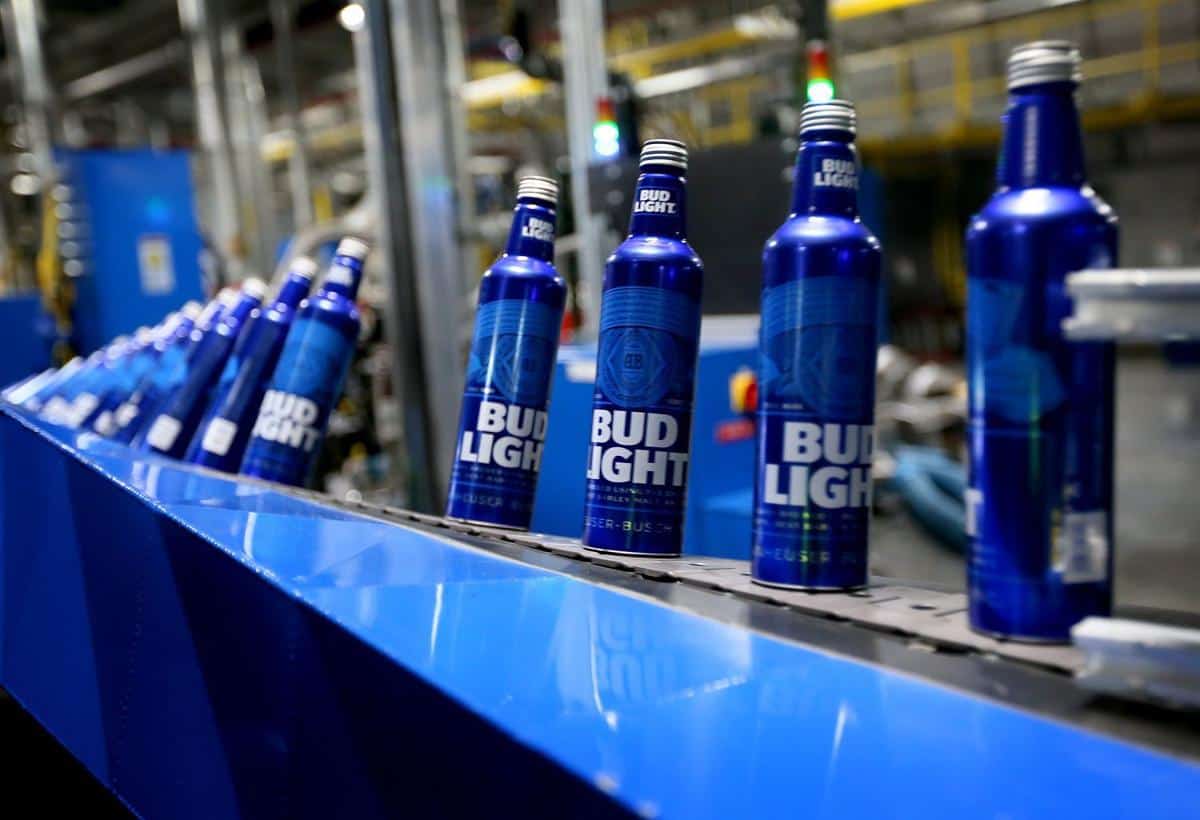
What Do Bud Light Drinkers Have to Say About the Beer?
Beer drinkers enjoy Bud Light because of its consistency and generic taste that holds no surprises. You can safely grab one at a party or a barbecue with the knowledge that it will quench you thirst and satisfy your need for a normal beer taste.
It is recommended to serve Bud Light at an icy temperature, and then drink it before the condensation droplets have rolled to the bottom of the bottle. And Bud Light consumers are insistent that the bottled beer tastes better and more refreshing than the cans.
Bud light has a pale, yellow colour and pours with a large, foamy head that quickly dissipates into a medium head with sizeable bubbles. As far as lacing is concerned (the residue left by the beer head foam as you drink the beer), Bud Light has virtually no lacing.
The aroma of a Bud Light has been described by various drinkers as having notes of corn, waffle syrup, and sugar. There is minimal hop taste presence, and most Bud Light drinkers enjoy its innocuous beer flavour with the equivalent carbonation to a soda. When the bottle is completely drained, there might be a hint of sweet grain finish if you sniff the bottle opening deeply.
Bud Light consumers rave about its exceptional drinkability for people of all taste preferences.
Anheuser-Busch has an appealing “farm to bottle” step by step manufacturing process. From the sourcing of the ingredients, through to putting the cap on the bottle, Bud Light is monitored and subjected to rigorous quality control. This can be seen in the unvarying taste and colour in the billions of Bud Light bottles sold around the world and across the States every year.
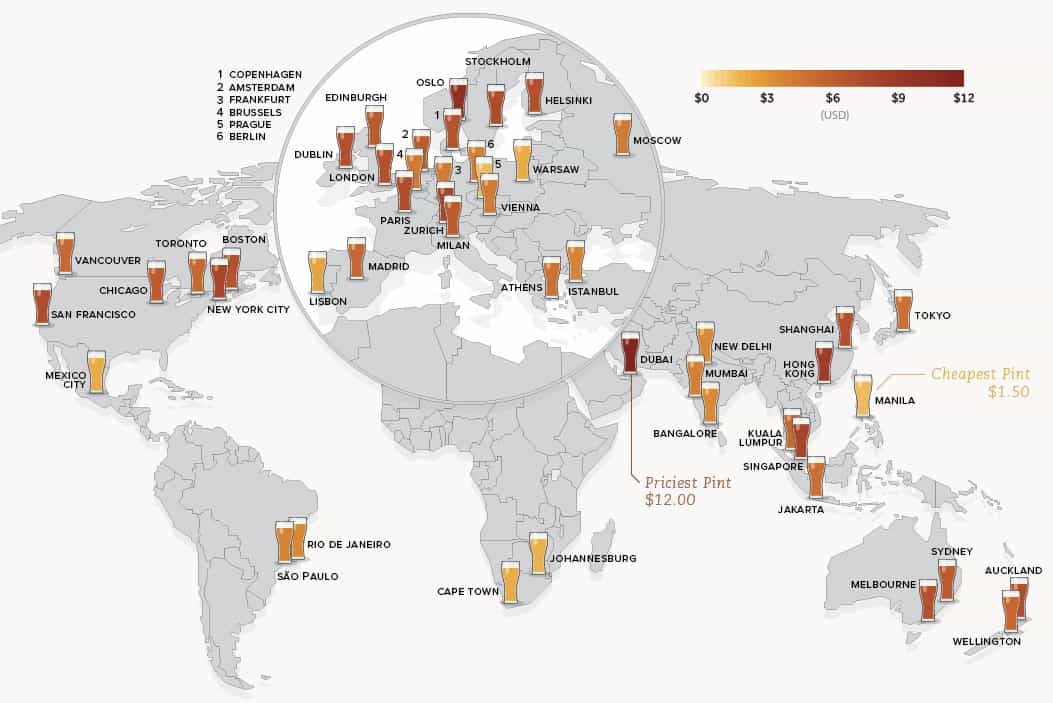
Beer: Price, Taste, & Marketing is what decides which one you buy
End of Part 1
This is the first in our series about countries and the beers they love. It is fascinating to discover the reasons why certain beers grow to become the dominant product in the different countries. These favourite beer brands are so ingrained into the consciousness of the citizens of each place that even when the person moves to live in another country, they will still prefer the taste of the beers to which they were initially exposed. To them, it is the taste of home and one to which they will always identify.
However, craft beer production is growing at an almost exponential rate. Could it be that one day, the most popular beers around the world map will change over to craft beer?
Let the YoLong Brewery Equipment Team know what you think in the comments below.

